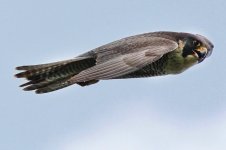OronoBirder
New member

I'm new here, just found the site trying to find answers. I am an amateur photographer now using a Sony A6500, usually with a Tamron 18-300 lens.
I've been considering the Sigma 150-600 lens for birding, but found myself distracted by the alternative of digiscoping. That alternative would give me greater magnification, but what are the downsides? From reading some of the comments, it seems as though the digiscope adds some difficulties, but not having tried it I don't know what the problems are. Can someone elaborate on this?
I've been considering the Sigma 150-600 lens for birding, but found myself distracted by the alternative of digiscoping. That alternative would give me greater magnification, but what are the downsides? From reading some of the comments, it seems as though the digiscope adds some difficulties, but not having tried it I don't know what the problems are. Can someone elaborate on this?





